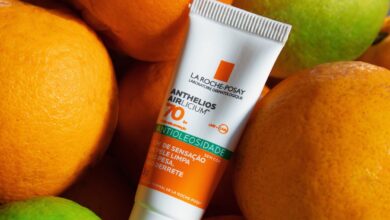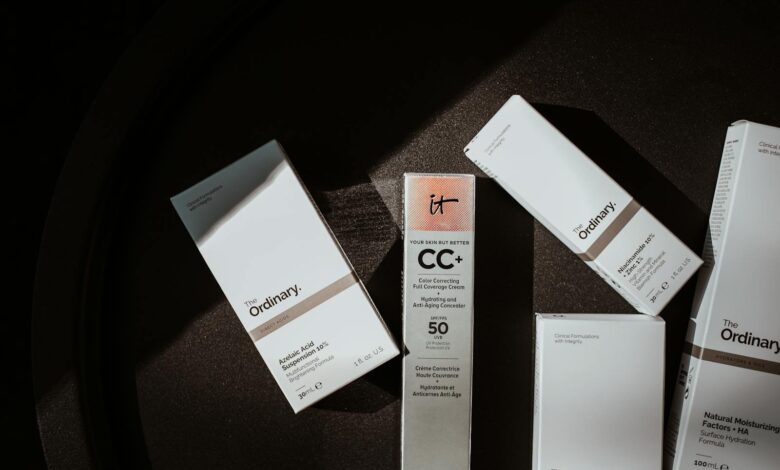
Navigating the skincare aisle can sometimes feel like reading a foreign language, with all those long, scientific-sounding ingredient names. That’s where stylish.ae’s Masterclass comes in – it’s like your personal decoder for all those complex skincare labels. In this article, we’re diving deep into the world of skincare ingredients, breaking down those confusing terms so you can pick your products like a pro. Get ready for a fun and enlightening journey into the heart of your skincare routine, where you’ll learn how to make choices that are just right for your skin.
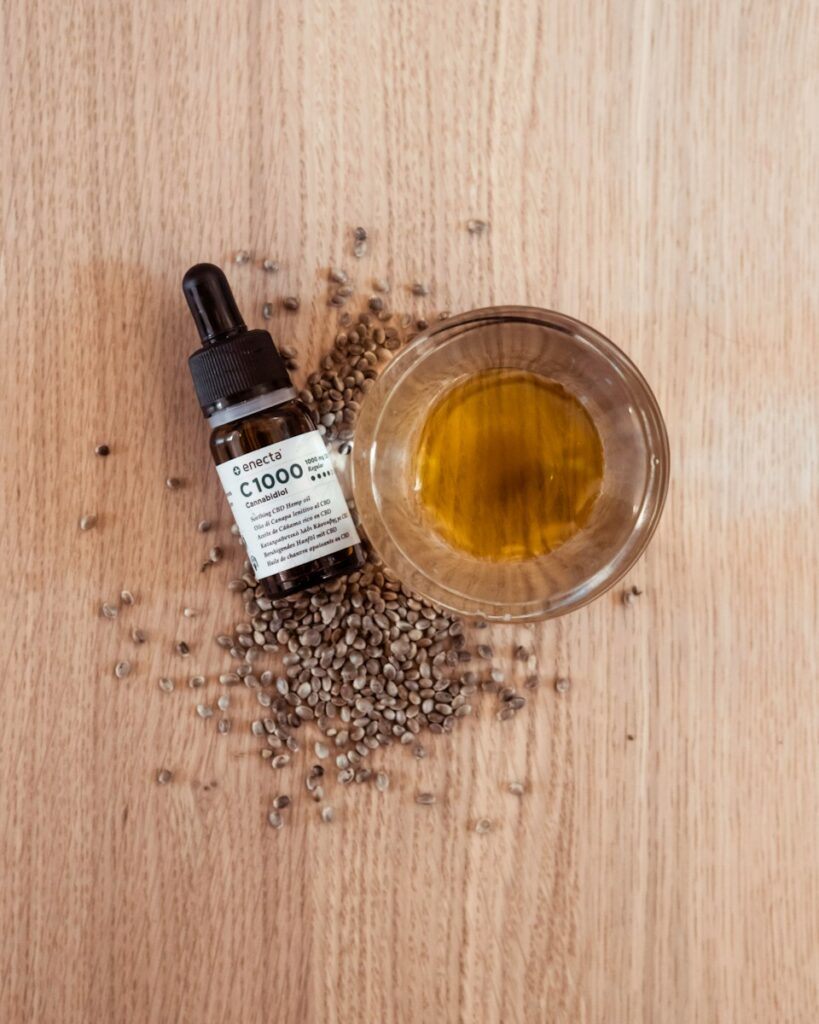
Understanding Skin Care Labels
Skin care labels are an essential tool for consumers to make informed decisions about the products they use on their skin. These labels provide valuable information about the ingredients, claims, and potential allergens or irritants present in the product. By understanding how to read and interpret these labels, you can ensure that you choose products that are suitable for your skin type and preferences. This comprehensive guide will walk you through the process of deciphering skin care labels and ingredients, helping you make informed choices for your skin care routine.
Why are Skin Care Labels Important?
Skin care labels are important for several reasons. Firstly, they provide crucial information about the ingredients contained within the product. This is especially important for individuals with sensitive skin or allergies, as they need to be aware of potential irritants or allergens. Additionally, skin care labels allow consumers to evaluate the claims made by the manufacturer and determine if they are accurate and supported by evidence. Finally, labels can help you identify harmful ingredients to avoid, ensuring that you are using products that are safe for your skin and overall health.
Key Terms to Know
Before diving into deciphering skin care labels, it’s important to familiarize yourself with key terms commonly found on these labels. Here are some terms you should know:
- Active Ingredients: These are the ingredients in a product that provide specific benefits, such as sunscreen protection or acne treatment.
- Inactive Ingredients: These are the ingredients that do not provide a specific benefit to the skin but are necessary for the formulation of the product.
- Fragrance-Free: This term indicates that the product does not contain added fragrances, which can be irritating to sensitive skin.
- Hypoallergenic: This term suggests that the product is less likely to cause an allergic reaction. However, it does not guarantee that it will not cause any allergic reactions.
- Non-comedogenic: This term indicates that the product is formulated to not clog pores, making it suitable for acne-prone or oily skin.
- SPF: Short for Sun Protection Factor, SPF indicates the level of protection the product provides against ultraviolet (UV) radiation from the sun.
By understanding these key terms, you will be better equipped to interpret the information provided on skin care labels.
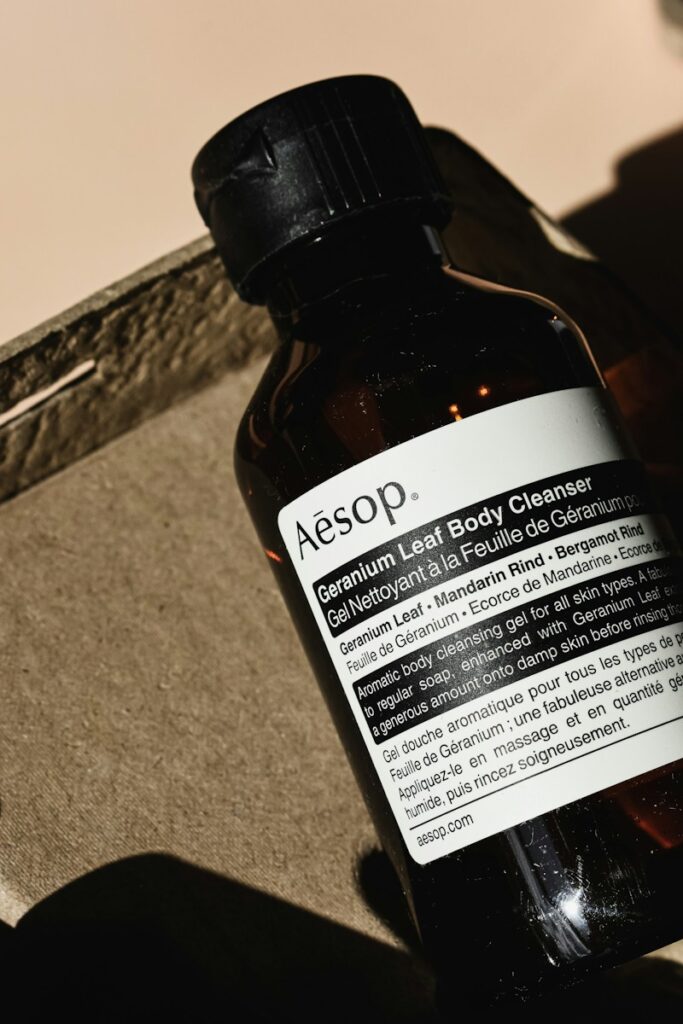
Reading and Interpreting Labels
Now that you have a good understanding of why skin care labels are important and the key terms to know, let’s dive into the process of reading and interpreting these labels. When examining a skin care label, there are several important sections to pay attention to:
- Ingredient List: This section lists all the ingredients present in the product, typically in descending order of concentration. Understanding the ingredients and their purpose can help you assess the efficacy and suitability of the product for your skin.
- Allergens and Irritants: Look for any allergens or irritants that may be present in the product. Common allergens include fragrance, certain preservatives, and botanical extracts.
- Claims: Take note of any claims made by the manufacturer, such as anti-aging, brightening, or soothing properties. Evaluate these claims critically to determine if they are supported by scientific evidence or purely marketing hype.
- Safety Warnings: Pay attention to any safety warnings mentioned on the label, such as avoiding contact with eyes or conducting a patch test before use.
By carefully examining these sections of the label, you can gain valuable insights into the product and make an informed decision about whether it is suitable for your skin.
Decoding Skin Care Ingredients
Understanding the ingredients used in skin care products is crucial for selecting the right products for your skin type and concerns. Here, we will explore common ingredients, how to read ingredient lists, and how to identify allergens and irritants.
Common Ingredients to Look for
When deciphering skin care labels, it is helpful to be familiar with some common ingredients found in skincare products. These include:
- Hyaluronic Acid: A moisturizing ingredient that helps retain moisture in the skin, making it plump and hydrated.
- Retinol: A derivative of Vitamin A that has anti-aging properties, improving the appearance of fine lines and wrinkles.
- Alpha-Hydroxy Acids: Also known as AHAs, these exfoliating ingredients help remove dead skin cells, revealing smoother and brighter skin.
- Niacinamide: A form of Vitamin B3 that helps improve skin texture, minimize pores, and reduce inflammation.
- Peptides: These are small chains of amino acids that can aid in firming the skin and reducing the appearance of wrinkles.
By familiarizing yourself with these common ingredients and their benefits, you can better understand the potential effects of a product on your skin.

Understanding Ingredient Lists
Ingredient lists play a crucial role in deciphering skin care labels. They provide a comprehensive breakdown of all the ingredients present in a product. The ingredients are typically listed in descending order of concentration, meaning that the ingredients at the top of the list are present in higher quantities.
When reading an ingredient list, it’s important to be aware of potential allergens or irritants that may be present. Common allergens include fragrance, certain preservatives, and essential oils. If you have known allergies or sensitivities, it’s essential to carefully scan the ingredient list to avoid any potential triggers.
Identifying Allergens and Irritants
Identifying allergens and irritants in skin care products is crucial, especially for individuals with sensitive skin or allergies. Some common allergens and irritants to look out for include fragrance, parabens, sulfates, artificial dyes, and certain botanical extracts.
To determine if a product contains potential allergens or irritants, carefully read the ingredient list and cross-reference it with a list of known allergens or irritants. If you have any doubts or concerns, it’s best to consult with a dermatologist or allergist to ensure the product is safe for your skin.
Differentiating Natural and Synthetic Ingredients
Understanding the difference between natural and synthetic ingredients is essential for informed decision-making when it comes to skin care products. Here, we will define natural and synthetic ingredients, discuss the pros and cons of each, and explore their impact on the skin.
Defining Natural and Synthetic Ingredients
Natural ingredients are derived from natural sources, such as plants, minerals, or animals. These ingredients are minimally processed and are believed to be gentle and safe for the skin. Examples of natural ingredients include aloe vera, jojoba oil, and shea butter.
On the other hand, synthetic ingredients are created in a laboratory using various chemical processes. These ingredients are often designed to mimic natural substances or provide specific skincare benefits. Examples of synthetic ingredients include retinoids and certain types of acids used in chemical exfoliants.
Pros and Cons of Natural Ingredients
Natural ingredients have gained popularity due to their perceived safety and environmental friendliness. They are often rich in antioxidants and other beneficial compounds that can nourish and protect the skin. Additionally, natural ingredients are generally well-tolerated by most individuals, particularly those with sensitive skin.
However, it is important to note that natural ingredients can also have drawbacks. Their efficacy may vary, and they may not deliver the same results as their synthetic counterparts. Furthermore, natural ingredients can be more susceptible to contamination and spoilage compared to synthetic ingredients, potentially compromising product safety and stability.

Pros and Cons of Synthetic Ingredients
Synthetic ingredients offer several advantages over natural ingredients. Since they are created in a controlled environment, their potency, stability, and safety can be precisely regulated. Synthetic ingredients also allow for greater customization, enabling manufacturers to develop products to target specific skin concerns effectively.
However, synthetic ingredients are not without their drawbacks. Some individuals may be sensitive or allergic to certain synthetic ingredients, and there can be concerns about their long-term effects on the skin and the environment. It is crucial to evaluate the safety and potential side effects of synthetic ingredients before incorporating them into your skincare routine.
Overall, the choice between natural and synthetic ingredients depends on personal preferences, skin type, and the desired results. It is important to assess the efficacy, safety, and potential environmental impact of both options before making an informed decision.
Navigating Claims on Skin Care Labels
When examining skin care labels, the claims made by the manufacturer can be influential in decision-making. Understanding the different types of claims, evaluating their accuracy, and recognizing misleading claims are crucial steps in deciphering skin care labels.
Understanding Different Types of Claims
Skin care products often make a variety of claims regarding their effectiveness and benefits. It is important to understand the different types of claims commonly found on skin care labels, such as:
- Anti-Aging Claims: These claims suggest that the product can reduce the appearance of wrinkles, fine lines, or other signs of aging.
- Hydrating or Moisturizing Claims: These claims indicate that the product can improve skin hydration levels, providing a smoother and plumper appearance.
- Brightening or Even-Tone Claims: These claims suggest that the product can help reduce the appearance of dark spots, hyperpigmentation, or uneven skin tone.
- Soothing or Calming Claims: These claims indicate that the product can help soothe and alleviate skin irritation or redness.
Understanding the specific claims made by a product can help you determine if it aligns with your skincare goals and concerns.
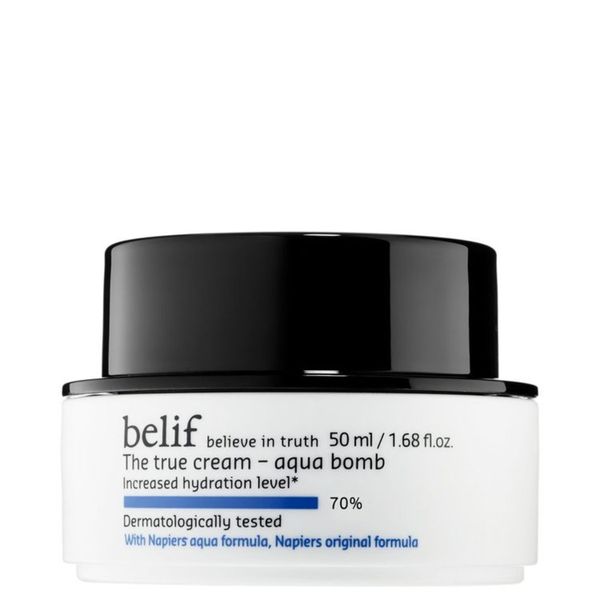
Evaluating Claims for Accuracy
When evaluating the accuracy of claims made on skin care labels, it is important to consider whether they are supported by scientific evidence or purely marketing tactics. Look for products that have undergone clinical trials or have been tested by independent third-party organizations. This can provide reassurance that the claims are supported by credible research and have demonstrated efficacy.
Additionally, it is important to be aware that some claims may be exaggerated or misleading. Watch out for vague or ambiguous language that does not provide concrete evidence or measurable results. If a claim seems too good to be true or unsubstantiated, it is prudent to approach the product with caution.
Recognizing Misleading Claims
Unfortunately, not all claims made on skin care labels are accurate or reliable. Recognizing misleading claims is crucial to avoid falling for false marketing tactics. Here are some red flags to watch out for:
- Miracle Claims: Avoid products that claim to be a “miracle cure” or promise unrealistic results. Skin care is a gradual process, and no product can magically transform your skin overnight.
- Fearmongering Claims: Be cautious of products that use fear tactics to market themselves. Claims that suggest your skin will age rapidly or become damaged without using their product may be manipulative.
- Ingredient Misrepresentation: Some products may highlight the presence of a specific ingredient while including it in minuscule amounts that are unlikely to provide any notable benefits.
- Unrealistic Before and After Photos: Be skeptical of before and after photos that appear overly dramatic or have been heavily edited. They may not accurately represent the actual results achievable with the product.
By being aware of these misleading tactics, you can make more informed decisions and select products that are credible and suitable for your skincare needs.
Identifying Harmful Ingredients to Avoid
Understanding harmful ingredients commonly found in skin care products is essential for safeguarding your skin and overall health. By being aware of these ingredients and their potential side effects, you can make educated choices and avoid potentially harmful products.
Common Harmful Ingredients
Several harmful ingredients are commonly found in skin care products. Being able to identify and avoid these ingredients is crucial for maintaining healthy skin. Here are some common harmful ingredients to watch out for:
- Parabens: These preservatives have been linked to hormone disruption and have raised concerns about their potential cancer-causing properties.
- Formaldehyde: Often used as a preservative, formaldehyde has been classified as a carcinogen by multiple health organizations.
- Fragrance: While often pleasant, fragrance can be a common irritant, especially for individuals with sensitive skin or allergies.
- Phthalates: These chemicals are commonly found in fragrances and can disrupt hormone levels, potentially causing reproductive issues.
- Sulfates: Sulfates, such as sodium lauryl sulfate (SLS) and sodium laureth sulfate (SLES), are harsh detergents that can strip the skin of its natural oils, leading to dryness and irritation.
These are just a few examples of harmful ingredients, and it is crucial to be vigilant and research any unfamiliar ingredients that may be listed on skin care labels.
Understanding Potential Side Effects
Being aware of potential side effects associated with certain ingredients is essential for protecting your skin and overall well-being. While everyone’s skin reacts differently, understanding common side effects can help you make better-informed decisions. Here are some potential side effects associated with certain ingredients:
- Sensitivity or Allergic Reactions: Ingredients such as fragrance, essential oils, and certain preservatives can cause skin irritation, redness, or allergic reactions, especially in individuals with sensitive skin.
- Skin Dryness or Irritation: Harsh detergents, alcohols, and certain exfoliating ingredients can strip the skin’s natural oils, leading to dryness, irritation, or even worsening of certain skin conditions.
- Increased Sun Sensitivity: Some ingredients, such as certain acids or exfoliants, can increase the skin’s sensitivity to the sun, potentially leading to sunburn or other sun damage if proper sun protection measures are not taken.
By understanding these potential side effects, you can minimize the risk of adverse reactions and select products that are gentle and safe for your skin.

Safeguarding Against Harmful Ingredients
To safeguard against harmful ingredients, it is important to carefully read and analyze the ingredient lists of skin care products. Research unfamiliar ingredients to understand their potential effects on the skin and any associated safety concerns. Additionally, consider opting for products that are labeled as “hypoallergenic” or “fragrance-free” to minimize the risk of irritation or allergic reactions.
If you have specific concerns or allergies, consulting with a dermatologist or allergist can provide personalized guidance and ensure that the products you choose are safe and suitable for your skin.
Choosing the Right Skin Care Products
Choosing the right skin care products for your needs can be a daunting task with countless options available in the market. By considering factors such as your skin type and specific concerns, understanding how to match ingredients to your needs, and considering personal preferences, you can streamline the process and find products that work best for you.
Determining Skin Type and Needs
Determining your skin type is an important first step in choosing the right skin care products. Common skin types include oily, dry, combination, and sensitive. Understanding your skin type can help you select ingredients and products that are tailored to address your specific needs.
In addition to skin type, identifying your specific concerns, such as acne, aging, or hyperpigmentation, can help narrow down the options. For example, individuals with acne-prone skin may want to look for products that contain ingredients like salicylic acid or benzoyl peroxide, which can help control breakouts.
Matching Ingredients to Skin Concerns
Once you have identified your skin type and concerns, it is important to match ingredients to address those issues effectively. By understanding the benefits and functions of different ingredients, you can select products that target your specific concerns.
For example, individuals with dry skin may benefit from ingredients like hyaluronic acid or ceramides, which help attract and retain moisture in the skin. Those with hyperpigmentation may look for products containing ingredients like vitamin C or niacinamide, known for their brightening properties.
Furthermore, certain ingredients may interact differently with specific skin types, so it’s crucial to consider compatibility as well. For instance, individuals with sensitive skin may want to avoid strong exfoliating ingredients or fragrances, as they can cause irritation.
Considering Personal Preferences
Beyond skin type and concerns, personal preferences also play a role in selecting the right skin care products. Factors such as texture, scent, and packaging can influence the overall experience and satisfaction with a product. Some individuals may prefer lightweight gel formulas, while others may prefer rich creams. Similarly, some may enjoy scented products, while others may prefer fragrance-free options.
Considering personal preferences can help ensure that you enjoy using the products and are more likely to maintain a consistent skincare routine.
Remember, the ultimate goal is to find products that are effective, suitable for your skin type and concerns, and align with your personal preferences.

Understanding Organic and Cruelty-Free Labels
The presence of organic and cruelty-free labels on skin care products can influence consumer choices. In this section, we will explore what organic really means, discuss certifications and regulations, and delve into cruelty-free labels and animal testing.
What Does Organic Really Mean?
The term “organic” is often associated with natural and healthy products. In the context of skin care, organic refers to products that are formulated with ingredients that have been grown without the use of synthetic pesticides or genetically modified organisms (GMOs).
Organic products are often believed to be safer and more environmentally friendly. However, it is important to note that not all natural or organic ingredients are necessarily beneficial for the skin, and not all synthetic ingredients are harmful. Ultimately, the efficacy and safety of a product should be assessed on a case-by-case basis, regardless of whether it is labeled as organic or synthetic.
Certifications and Regulations
To help consumers navigate the organic labeling landscape, various organizations and certifications exist. Some common certifications include USDA Organic, COSMOS Organic, and Ecocert. These certifications ensure that the products and ingredients meet specific criteria and have undergone rigorous testing to verify their organic status.
When looking for organic products, it is essential to identify a recognized certification logo on the packaging. This provides assurance that the product has met stringent criteria and complies with organic standards established by reputable organizations.
Cruelty-Free Labels and Animal Testing
Cruelty-free labels indicate that a product and its ingredients have not been tested on animals. These labels are significant for individuals who prioritize ethical and animal-friendly products.
It is important to note that cruelty-free labeling does not automatically mean that a product is vegan or free from animal-derived ingredients. Some cruelty-free products may still contain animal-derived ingredients such as beeswax or lanolin.
To ensure that a product is truly cruelty-free and aligns with your ethical values, look for certifications from organizations such as Leaping Bunny or PETA’s Beauty Without Bunnies program. These certifications guarantee that the product has not been tested on animals and does not contain any animal-derived ingredients.

Tips for Reading and Comparing Labels
Reading and comparing labels can be overwhelming due to the vast array of products available. Here are some useful tips to help you make informed decisions and select the best products for your skin:
Prioritizing Key Ingredients
When reading labels, focus on the active ingredients that are known to provide specific benefits to the skin. Look for ingredients that target your concerns and have scientific evidence supporting their efficacy. Prioritizing key ingredients ensures that you are selecting products that align with your skincare goals.
Researching Brands and Products
Take the time to research brands and products before making a purchase. Look for reputable brands that prioritize quality, safety, and transparency. Read reviews from other consumers to gain insights into their experiences with the product. Additionally, check for independent third-party testing or certifications to ensure the product meets certain quality standards.
Understanding Product Packaging
Product packaging can provide valuable information about the product. Pay attention to expiration dates, storage recommendations, and any safety warnings or precautions mentioned on the packaging. This information can help ensure that the product remains safe and effective throughout its lifespan.
Additionally, some products utilize environmentally-friendly packaging, such as recyclable or refillable containers. If sustainability is important to you, consider opting for products with eco-friendly packaging.
By following these tips, you can effectively compare and evaluate different skincare products, allowing you to make informed decisions that align with your needs and preferences.

Consulting Professionals for Skin Care Advice
While it is valuable to educate yourself on skin care labels and ingredients, consulting professionals can provide personalized advice and guidance tailored to your specific skin concerns. Dermatologists and estheticians are trained experts who can help you understand your skin’s needs and recommend appropriate products and treatments.
Dermatologists and Estheticians
Dermatologists are medical doctors who specialize in diagnosing and treating various skin conditions. They can provide expert advice on managing specific skin concerns, such as acne, eczema, or signs of aging. Dermatologists can also recommend prescription-strength treatments if necessary.
Estheticians, also known as skincare therapists, are experts in skin care and beauty treatments. They can provide guidance on general skincare routines, product recommendations, and non-medical treatments such as facials or chemical peels.
Both professionals can assess your skin’s needs, recommend suitable products, and guide you towards effective skincare regimens.
Seeking Reliable Sources
When seeking skin care advice, it is important to rely on reliable sources. Look for licensed dermatologists or estheticians who are experienced and well-qualified. Consider seeking recommendations from trusted friends or family members who have had positive experiences with skincare professionals.
Additionally, reputable skincare websites or blogs written by skincare experts can provide valuable information and guidance. Be cautious of sources that promote pseudoscience, make unsupported claims, or are associated with biased commercial interests.
Avoiding Biased Recommendations
It is important to be aware that some skincare recommendations may be biased or influenced by financial interests. Certain influencers or online personalities may promote specific brands or products due to sponsorship or financial arrangements. While they can offer insights and personal experiences, it is essential to consider multiple sources and evaluate the evidence behind their recommendations.
By consulting professionals and seeking reliable sources, you can gain personalized and evidence-based advice to support your skincare journey.
Conclusion
Understanding skin care labels is essential for making informed decisions about the products you use on your skin. By comprehensively deciphering and interpreting skin care labels and ingredients, you can select products that are suitable for your skin type, concerns, and personal preferences. Additionally, being aware of harmful ingredients and misleading claims can help safeguard your skin and overall health.
As you navigate the world of skin care products, take the time to prioritize key ingredients, research brands and products, and consult professionals when needed. By arming yourself with knowledge and seeking reliable sources, you can confidently choose the right skin care products and support your skin’s health and vitality. Remember, your skin deserves the best care possible, and understanding skin care labels is a crucial step towards achieving that goal.



